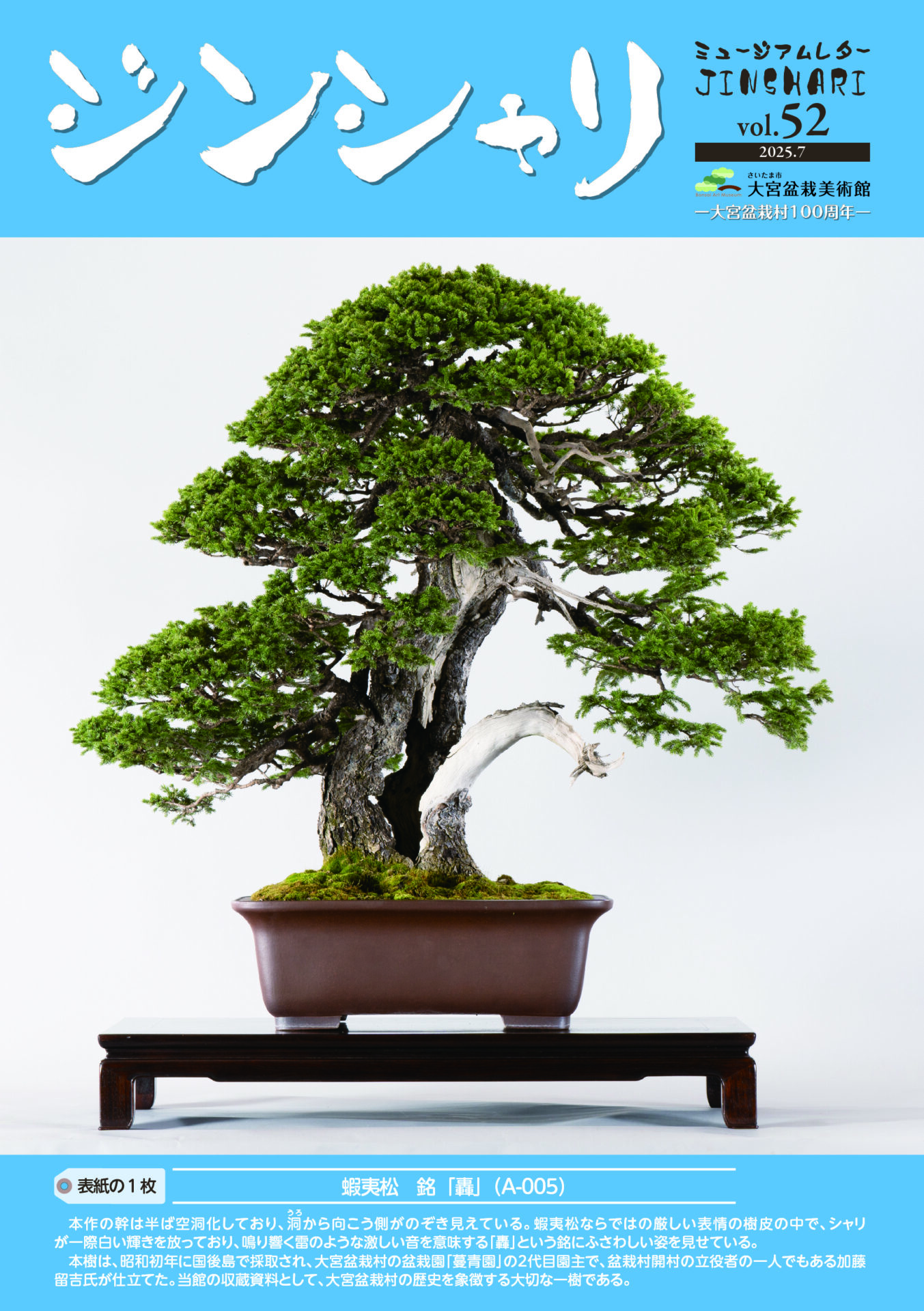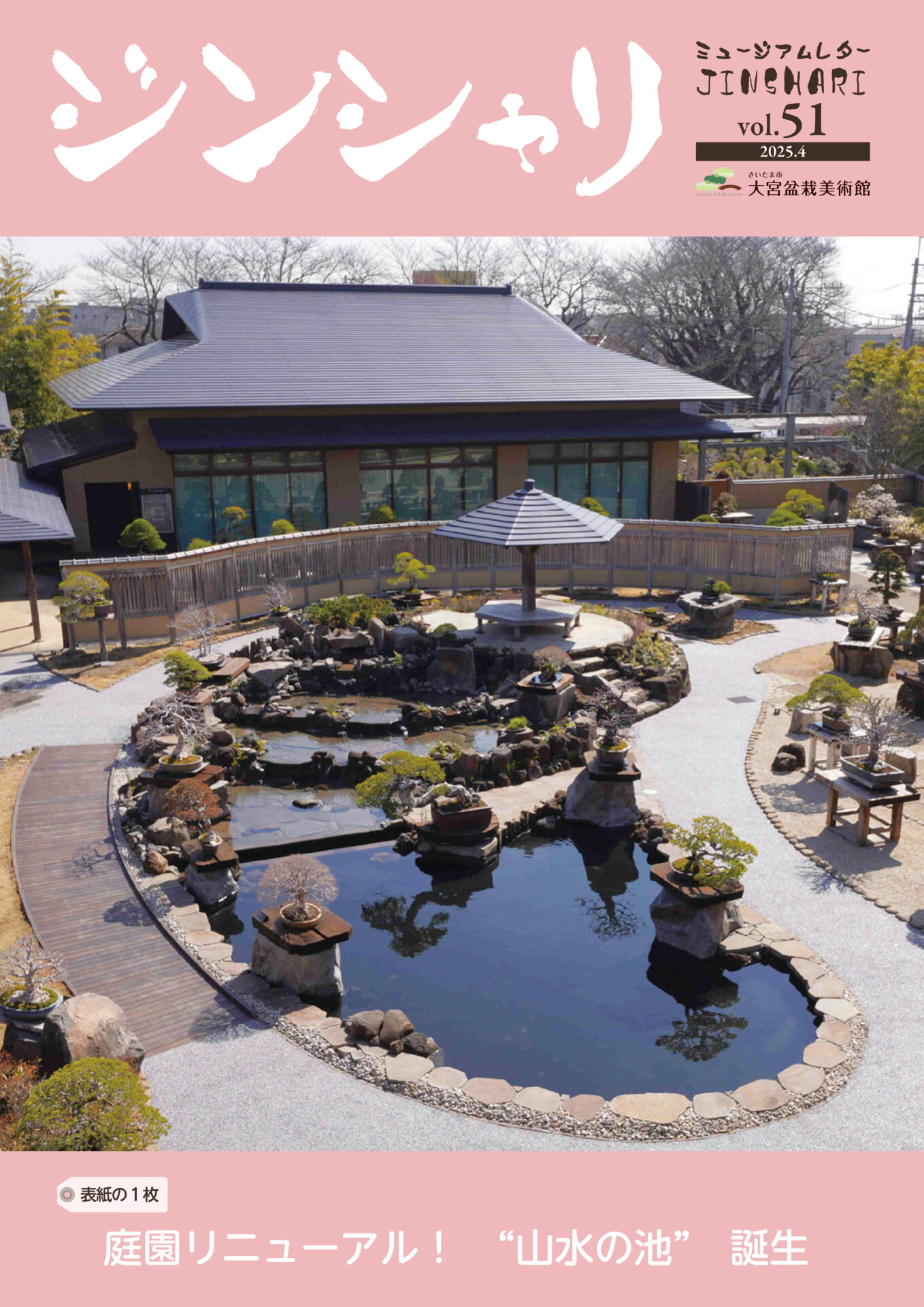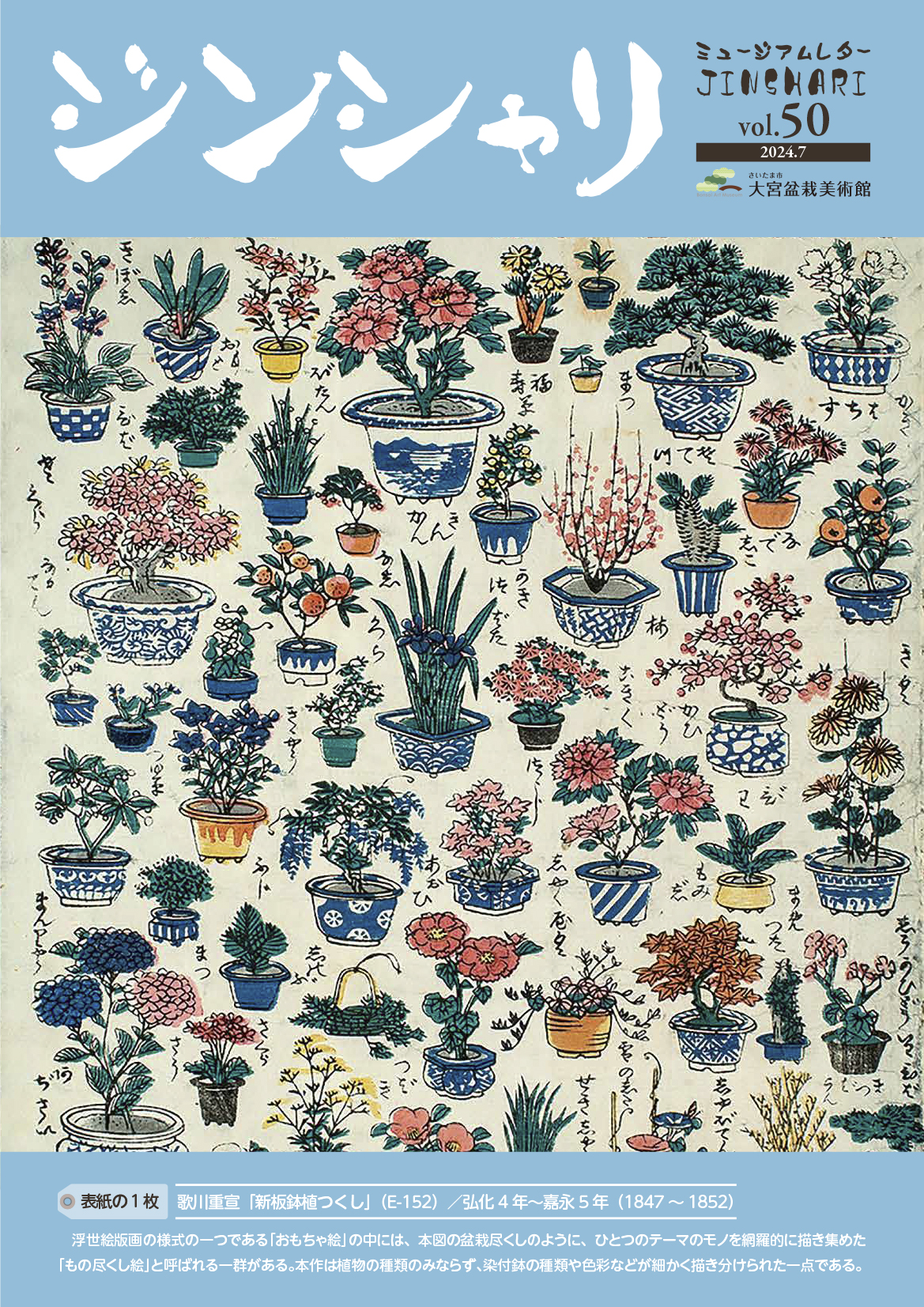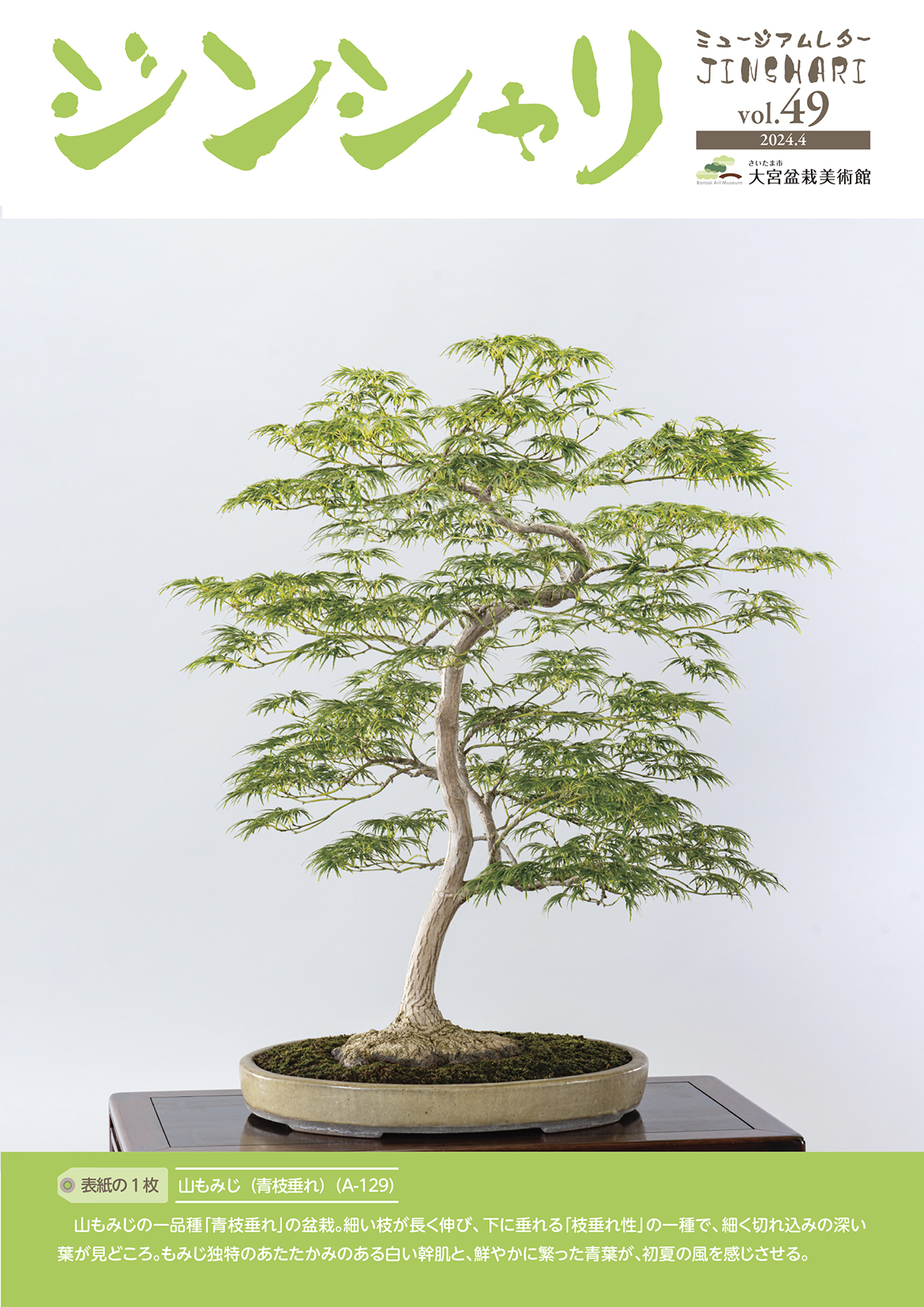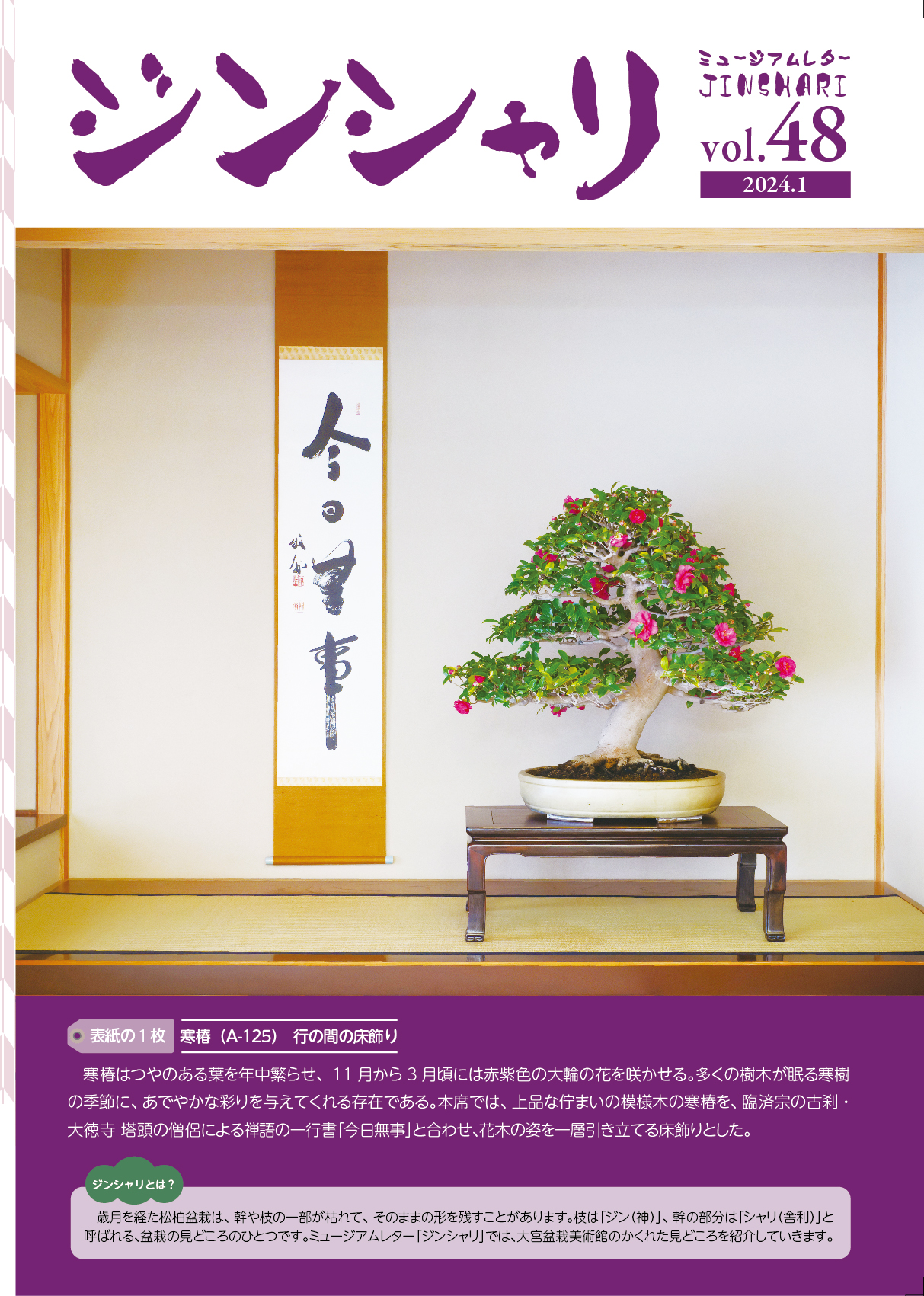Jinshari Vol.50
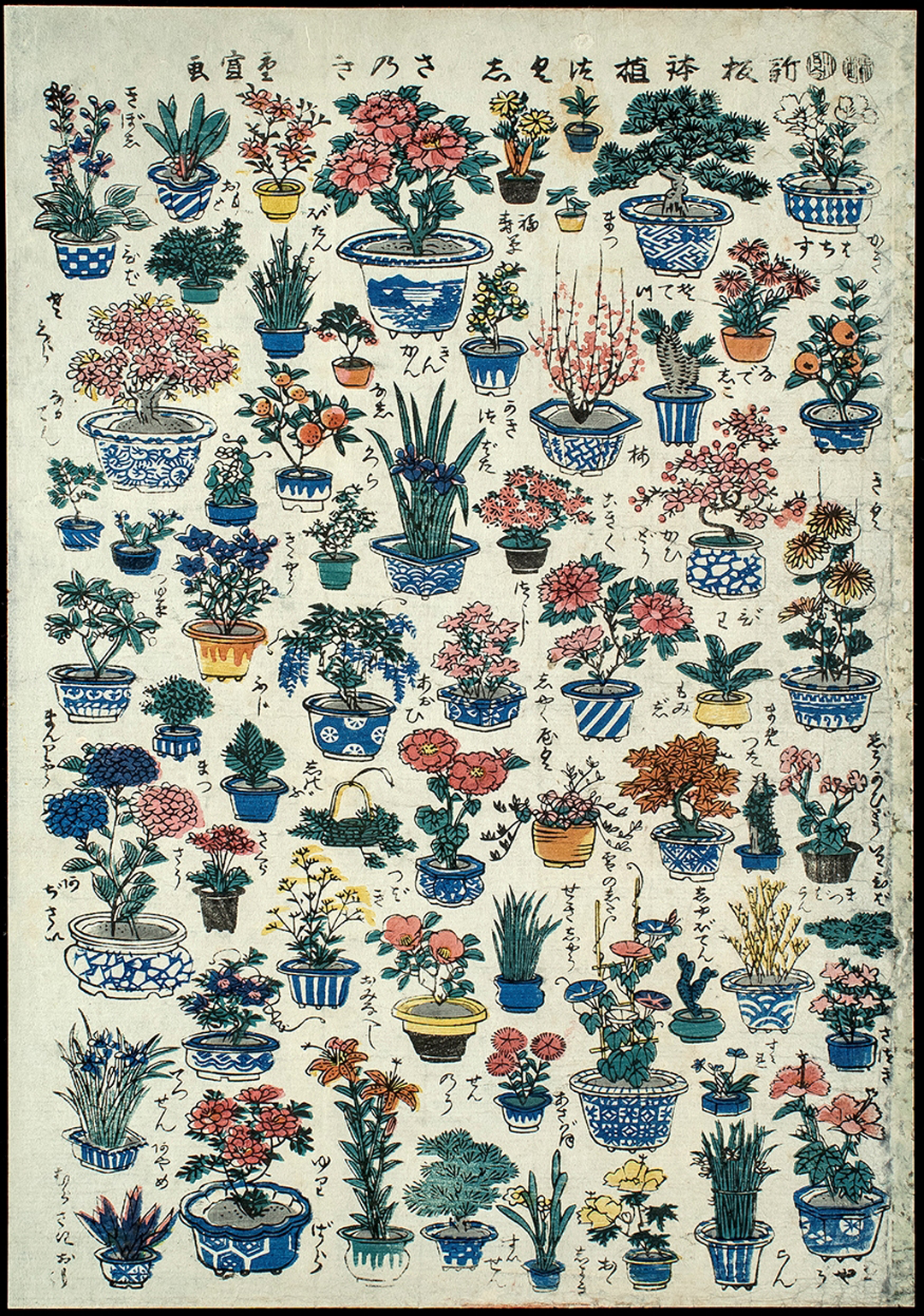
-
【Front Picture】Utagawa Shigenobu - Enumeration of Bonsai (E-152) / c.1847-1852
This ukiyo-e woodblock print is a kind of omocha-e, meaning "toy picture", in which many different kinds of bonsai are drawn together. These kinds of drawings where various items that followed a particular theme were drawn together were popular enough to have their own name, mono-zukushi-e, literally meaning "enumeration picture". Not only are many different types of of plants depicted, but also numerous kinds of pots and color schemes can be seen.
https://www.bonsai-art-museum.jp/en/collection/e-152/
Behind the Exhibits
Deciphering Illustrated Plant Reference Books from Edo - Researching Documents for the Special Exhibition
We have spent a lot of time recently groaning whilst looking through magnifying glasses and taking notes.
On the other side of the magnifying glass, there are many different blue and white porcelain pots adorned with a variety of patterns. These pots contain a variety of plants, such as fully blooming peonies, cherries, camellias, Chinese peonies pheasant's eyes, cotton, chrysanthemums, azaleas, satsuki azaleas, lilies, magnolias, wisterias, as well as morning glories, golden laces, and primroses. There are not only flowering plants but also pines, bamboo plants, sweet flags, sacred lilies, ferns, and even cacti. There are so many different types of flowers and trees laid out on the page.
Potted plants have been depicted together on a single ukiyo-e woodblock print, each being carefully drawn to show off the differences in species and breeds amongst them. Around 70 gorgeous colored potted plants of different sizes can be seen on this approximately B4-size piece of washi (Japanese paper).
There is a genre of ukiyo-e woodblock prints called mono-zukushi art. These were produced from the Edo period to the Meiji period in Japan. These pictures would take a variety of items of a singular theme and depict them together. In this case, they used potted plants. The specific type of mono-zukushi would be named after the items it was depicting together. For example, if carpentry tools (daiku-dougu in Japanese) are the theme, it is a “daiku-dougu-zukushi”, if the theme is animals (kemono in Japanese), then it would be something like “kemono-zukushi” or a “tori-zukushi” ("tori" meaning bird). Artists would create these almost as picture books for children to learn while having fun. The items depicted would have their features drawn in a way that is easy to see. It is possible that these materials based on mono-zukushi would be used in schools during the Meiji period. They are also great for learning about plants for us today.
The special exhibition we will hold this autumn will introduce bonsai-zukushi ukiyo-e woodblock prints. But before we can show this, we first have to decode what plants are written on the page. I feel that there is going to my many more days of groaning to come.
Special Exhibition – The Great Ukiyoe Plant Field Guide – Enumeration of Fun with Bonsai Enumerations!
Period: Sat. September 21 – Wed. October 30
Venue: Exhibition Room
Exhibition Closed: Every Thursday and on Fri. October 11
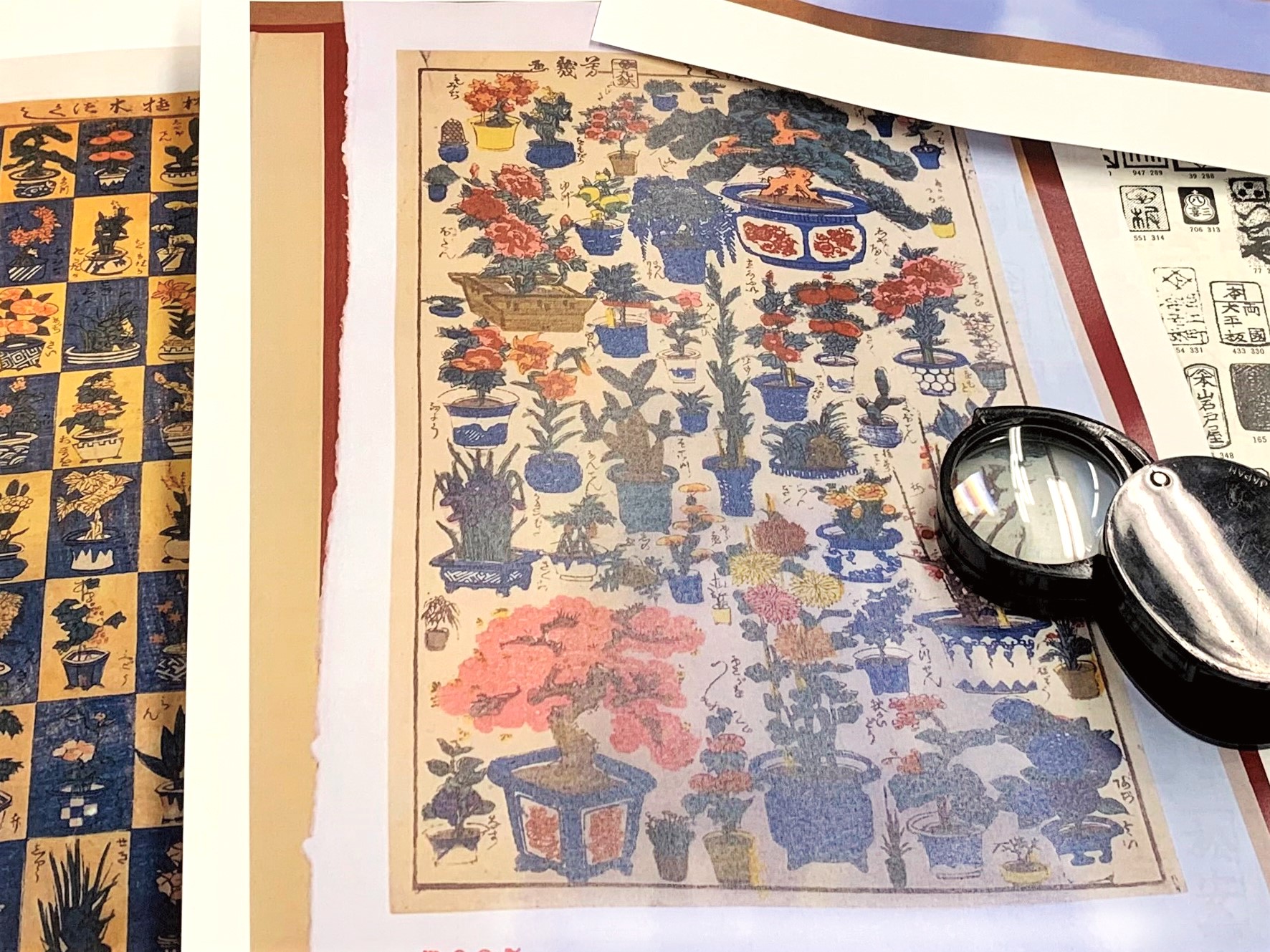
Deciphering the different types of plants in the picture using a magnifying glass
Artist’s Work
Goodnight Seiryu, we'll see you again soon! - Repotting the Japanese White Pine named "Seiryu"
The Japanese white pine named “Seiryu” (meaning “blue dragon”) was given this name due to its resemblance to a dragon twisting its body as it flies through the sky. It was one of the two most popular bonsai in the museum. At the start of April, it was repotted for the first time in 10 years. After repotting it has been placed in our cultivation area for a time in order to care for it, so guests will not see it for a while. In this issue, we will give a report on the repotting of the Japanese white pine “Seiryu” (A-060).
When repotting this 350-year-old bonsai, there are several things to take into account and be careful of. Firstly, it is important to not damage the tree by hurting its trunk, breaking its jin or shari, and also not hurting the roots too much. Various issues also arise because of Seiryu's unique shape. For example, due to how it reaches out horizontally from its pot, it has to maintain a perfect balance to stand up. Even the slightest touch could make it fall. In order to prevent this, the tree is properly held in place. Holding a bonsai in place takes a lot of effort while repotting.
When the tree is removed from the pot after the soil around it has been carefully scraped out, the roots underneath can be seen. They have tangled close together after growing out for 10 years, but they appear healthy. To keep the balance needed for Seiryu to stay up by itself, the roots at its center which support it need to be maintained as much as possible. A thick bamboo skewer was inserted between the tangled roots on the opposite side of where the roots stick out. The body was then held in place through wiring that fixed the skewer to the bottom of the pot. Consideration is taken in places one cannot see from the surface to preserve the unique shape of Seiryu.
This time the pot was also changed. Seiryu was previously placed inside a valuable deimono pot from China, but the length of the pot was too small for the tree now, so it was placed into a new pot from Tokoname in Aichi Prefecture.
Please look forward to seeing Seiryu back in the garden once it has gotten used to its new pot!

Bamboo skewers are inserted to secure the roots.

"Good Job, Seiryu!". After repotting, the plant is given lots of water.
Supporter Reporter
Workshop Support - "Hear, Learn, and Experience!"
Numerous events at the Omiya Bonsai Art Museum are run together with the Museum Supporters, a group formed by volunteers. In this issue, a Supporter will tell us about workshop support, one of the 5 activities in which the Supporters take part.
Every third Sunday of the month two bonsai workshops, one in the morning and one in the afternoon, are held at the Omiya Bonsai Art Museum. The morning workshop is for children, while the afternoon workshop is aimed at adults. Also, during the summer holiday period, the museum will also run a Summer Holiday Workshop aimed at Elementary School students.
It may seem quite hard, but it isn’t at all, so please relax! You will find that it is easy to get absorbed into it and you can have a lot of fun. The workshops are designed to let participants take the initiative. What makes these workshops great is not only the fact that you can learn about bonsai, but can also experience bonsai through actually touching them, and one can also hear other participants' questions and opinions.
In the bonsai-making workshops, one can learn about the species of tree being used for the bonsai, and have a hands-on experience when you can repot a bonsai into various types of pots. We supporters are there as assistants to the teachers of the workshops, so we will also be having fun and learning with everybody there.
Looking back, taking part in a workshop was the first chance I had to touch a bonsai myself. It might seem like a bit of an over-exaggeration, but I now feel like my whole world changed by having that first bonsai in my hands. Bonsai are living. And so, I feel that by taking part in the important task of raising my bonsai every day, I am helping to preserve a part of Japanese culture. Why don’t you all try cultivating a bonsai, it could change your whole worldview.
Museum Supporter Kazuyuki Shirai
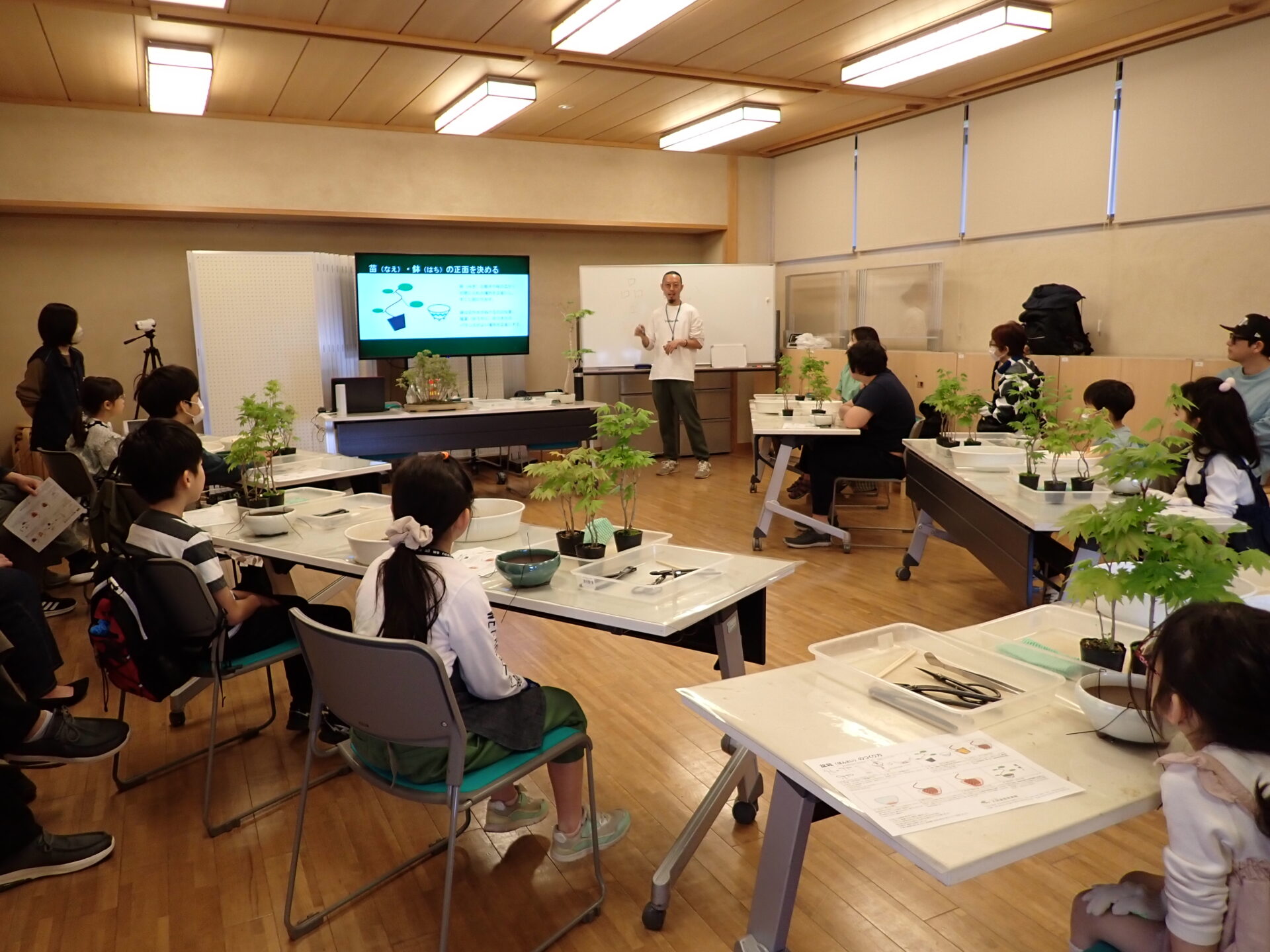
Children carefully listening to the instructor during a maple bonsai workshop. Getting to watch over scenes like this is a big perk of being a supporter.





